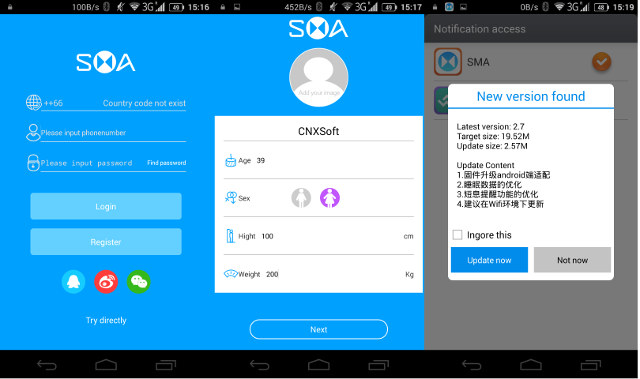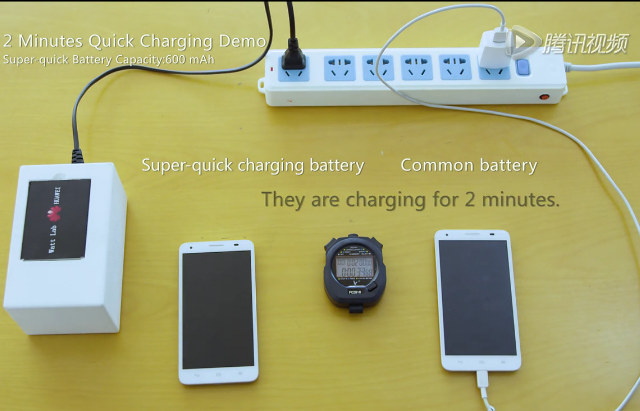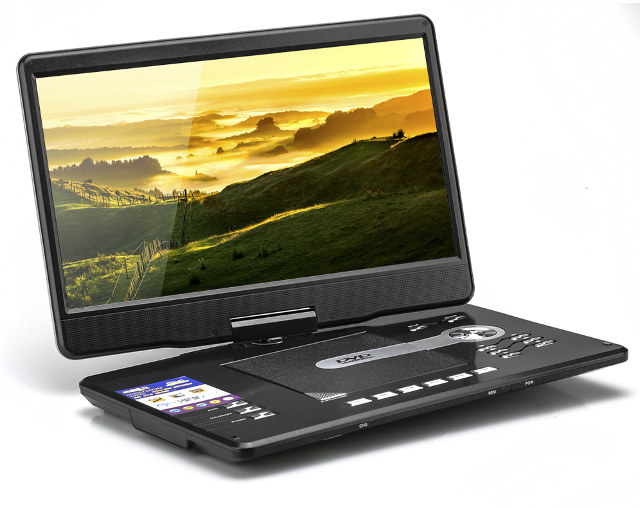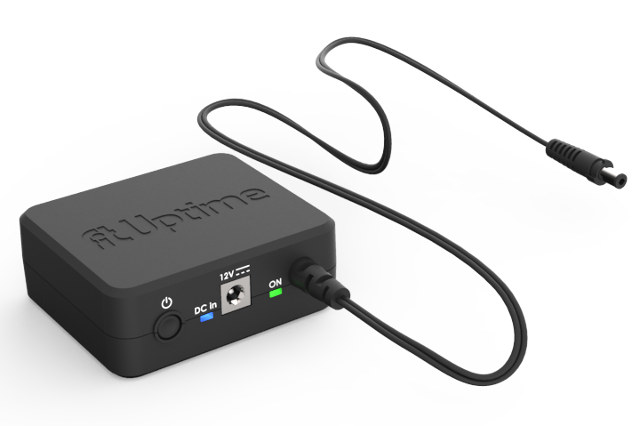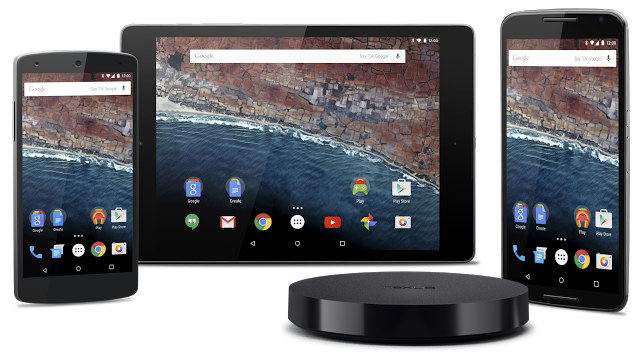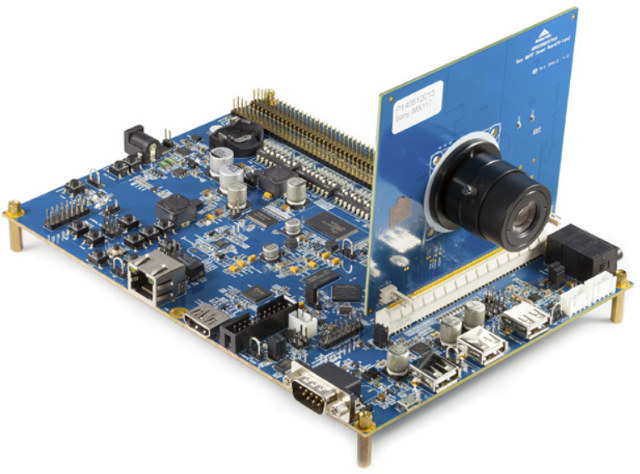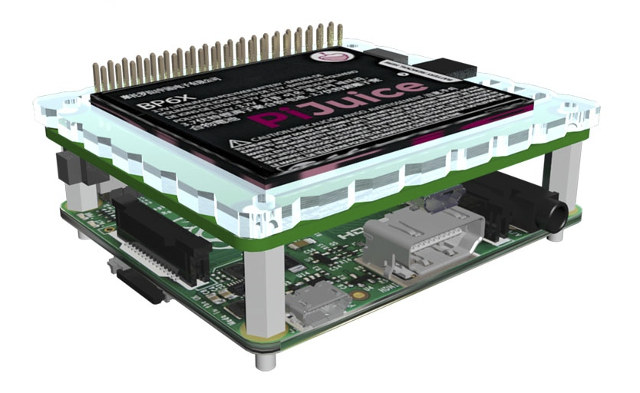I had great hopes for SMA-Q smartwatch, as it features an always on color e-Paper display, a built-in heart rate monitor, and promised 30-day standby battery life, as well as being 30-meter water resistant. But last week, I found out that the latter did not mean waterproof, and instead the watch was rated IP65 that’s only good enough to wash hands and a little rain, but not showering let alone swimming. In the last week, I could play with the watch, and found some serious Bluetooth connectivity issues (with Iocean M6752 smartphone), and I was recommended to upgrade the firmware of SMA-Q watch, and after that my Bluetooth issue have somewhat improve, but everything pretty much went downhill, and the watch is now out of order, and shows no sign of life. So while I was expecting to write a full review, I’ll simply report with experience with the watch […]
Huawei Quick Charging Li-Ion Batteries Promise 10 Times Faster Charge
Watt Lab, part of Huawei’s Central Research Institute, has demonstrated new fast charging batteries for smartphone and tablets at the 56th Battery Symposium in Japan. The lab claims these new batteries can be charged 10 times faster than normal batteries, reaching about 50% capacity in a 5 minutes for a 3,000 mAh battery. Two video demos were uploaded online both using a special charger for the battery only, and compared it to a mobile phone charge with a power adapter. The first demo includes a depleted 600 mAh filled to 68% in just 2 minutes. The second demo is quite similar but with a 3,000 mAh battery (620 Wh/L energy density) charged to 48% in 5 minutes. That means you could get about half day worth of battery with a 5 minute charge. The feat can apparently be achieved by adding “heteroatoms“: According to Huawei, the company bonded heteroatoms to […]
Low Cost 15.6″ Portable DVD Player Could Be Used as a Cheap Battery Powered HDMI Display
I’ve already written about portable displays with products such as Gechic On-Lap Monitors which sells for $200 and AOC USB Portable monitors are also popular, and somewhat cheaper than I expected at $120 and $199 for a 15.6″ display at respectively 1366×768 and 1920×1080 resolution, although if you live outside the US, shipping and import fees deposit bring the price much higher. A search for “portable display” on Aliexpress only showed some smaller 3.5 to 7″ displays, but I’ve been tipped about a 15.6″ portable DVD player selling for $114.53 on Chinavasion that could be used as an external display too thanks to its HDMI input. Specifications of this portable DVD player: SoC – Mediatek Solution Display – 15.6″ TFT LED Screen with 270 degree swivel; 1366×768 resolution; 16:9 aspect ratio Disc support – DVD, CD, EVD, VCD, CD-RW, DVD-R. Hitachi lens Video Output – AV Video Input – HDMI, […]
Compulab fit-Uptime is a 12V mini UPS for Intel NUCs, fit-PCs, and More
Power failures can cause loss of data, or if you are unlucky even brick your devices, and for business users there may be a maintenance cost. UPS (Uninterruptible Power Supplies) prevent those issues by providing power when the mains fail, and while they are relatively inexpensive, they are quite bulky. That’s probably Compulab designed fit-Uptime a mini UPS taking 12 to 19V input and outputting 12V to keep mini PCs such as the company’s fit-PCs or Intel NUCs for a couple of hours. fit-Uptime specifications: Capacity – 18 watt hour Input: DC 12V to 19V Output on battery – DC 12V / 5A Output when powered – 12V to 19V (same as input) / 5A Battery – Lithium polymer built-in non-replaceable (good for up to three hours) Dimensions – 6.8 cm (l) x 8 cm (w) x 3.2 cm (h); Power jack: 5.5mm x 2.5mm barrel Weight – 240g The […]
Android M Preview Images & SDK and Key Changes
Google formally announced Android M (Marshmallow?) at Google I/O, and released preview images for Nexus 5, Nexus 6, Nexus 9, and the Nexus player. If you don’t own any of these devices, you can also run Android M in the emulator using the preview SDK. So what’s new in Android M? Google reports over 100 changes, but here are some of the highlights of improvements and new features: User Control of Permissions – With Android M, apps can trigger requests for permissions at runtime, and let users choose whether to allow it. For example, if your flashlight app suddenly request access to your contact list, a window may pop up and you are free to decline it. Users will also have easy access to manage all their app permissions in settings. Doze improves Battery Life – Android M will use motion detection to learn if a device has been used […]
Ambarella Unveils SL2m IP Camera Reference Design Promising up to 6 Months of Battery Life
Ambarella S2Lm IP Camera SoC features a Cortex A9 CPU core, encodes video with H.264 up to 3Mp30 / 1080p30, and targets consumer and entry-level IP Camera designs. The company recently launched a new battery-powered IP camera reference design based on the solution that promises up to 6 months battery life, and can record Full HD video in less than 500ms from wake up, making ideal for battery operated security cameras. A Linux SDK is also provided with reference implementations for low-power standby operation, wake-on-Wi-Fi and fast boot to Linux. Unfortunately, that’s about all we know about the reference design, so instead I’ll have a look at the processor, and SL2m IP camera evaluation board. Ambarella SL2m SoC specifications: CPU – ARM Cortex-A9 processor with 32KB/32KB I/D and 128 KB L2 Cache, NEON and FPU, Crypto Engine – AES/3/DES/SHA-1/MD5 DSP / VPU – Ambarella Image and Video DSPs Sensor and […]
PiJuice Battery HAT Module for the Raspberry Pi Boards Comes with an Optional Solar Panel (Crowdfunding)
The Raspberry Pi is a low power board that can be powered a few hours or a few days with batteries, and the easiest solution is probably to use a USB power bank connected to the micro USB port of the board, but the solution is not really integrated. That’s where PiJuice comes into play. It’s a HAT compatible module that connects nicely to the latest Raspberry Pi boards with 40-pin header (A+, B+ and B2), and include a 1,400 mAh battery that can be used as UPS (Uninterrupted Power Supply), an RTC, and more. Key features of PiJuice HAT: 1400 mAh Lipo battery, good enough to last up to 24 hrs in constant use. 5,000 mAh batteries are also said to be supported. Full UPS (Uninterrupted Power Supply) solution Integrated RTC (Real Time Clock) On board intelligent on/off switch Low power deep-sleep state with wake on interrupt/calendar event On […]


